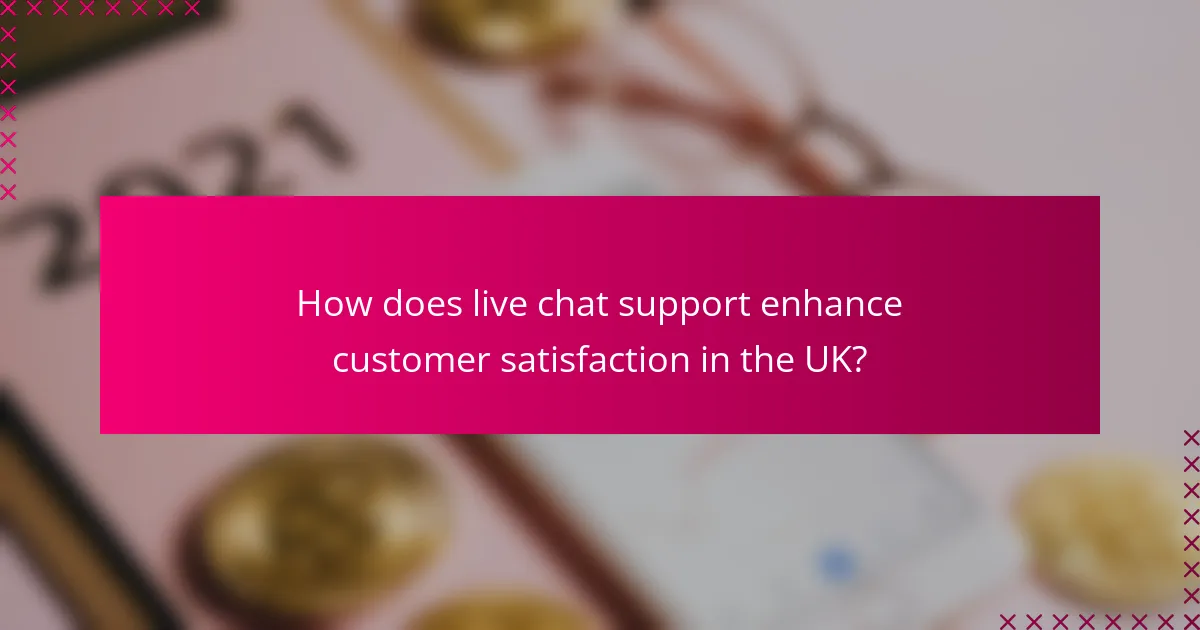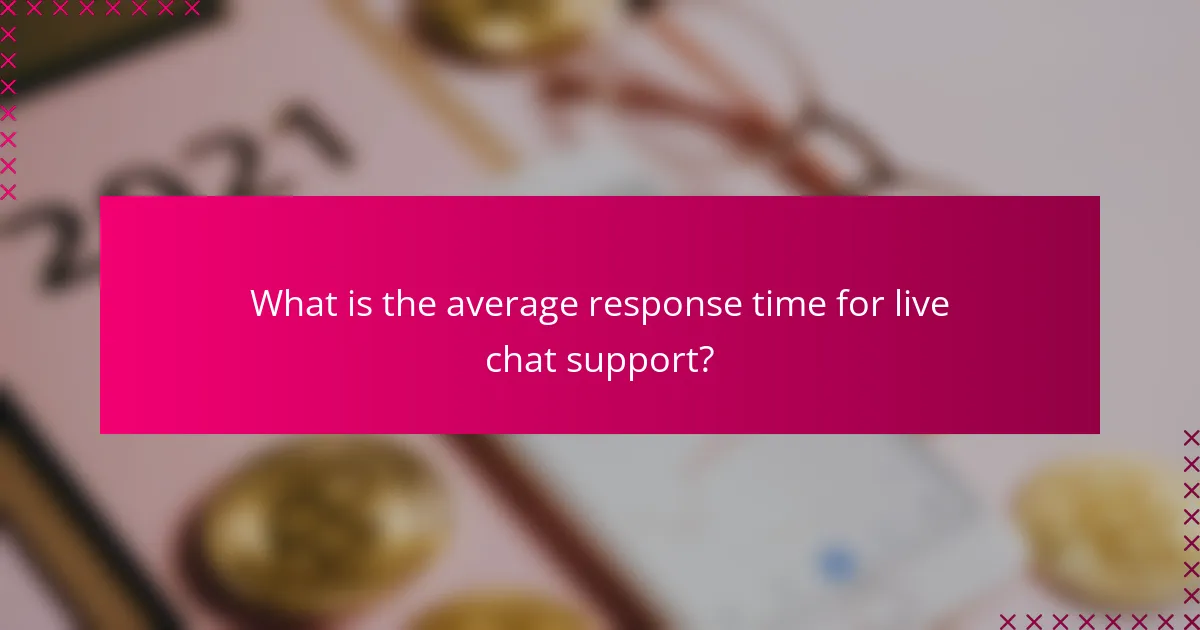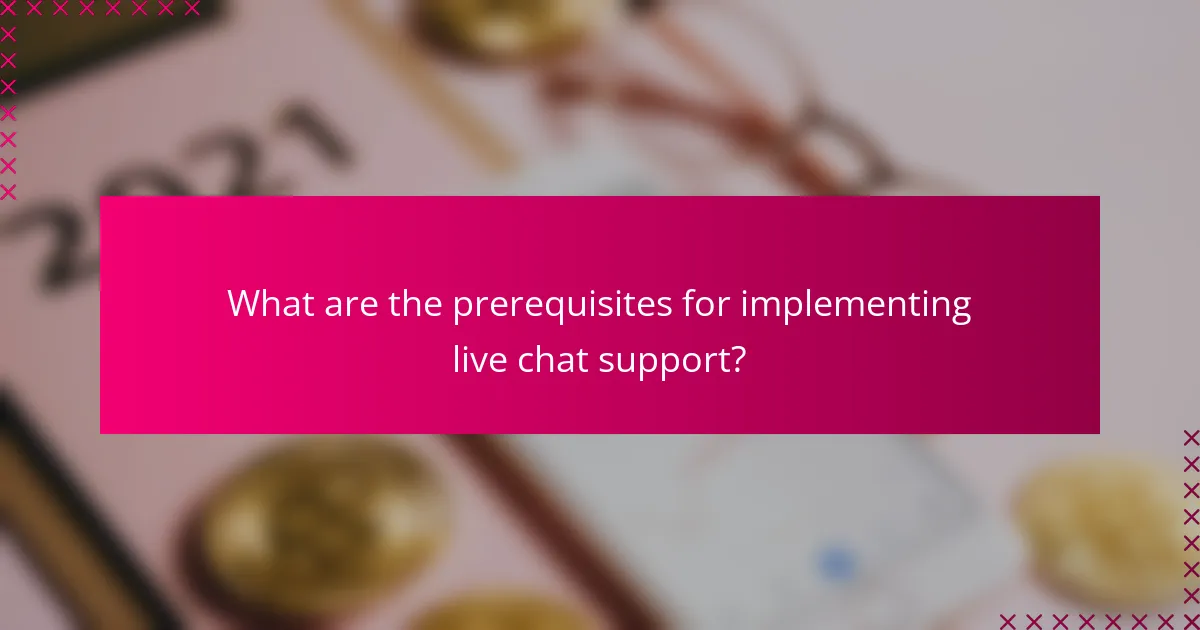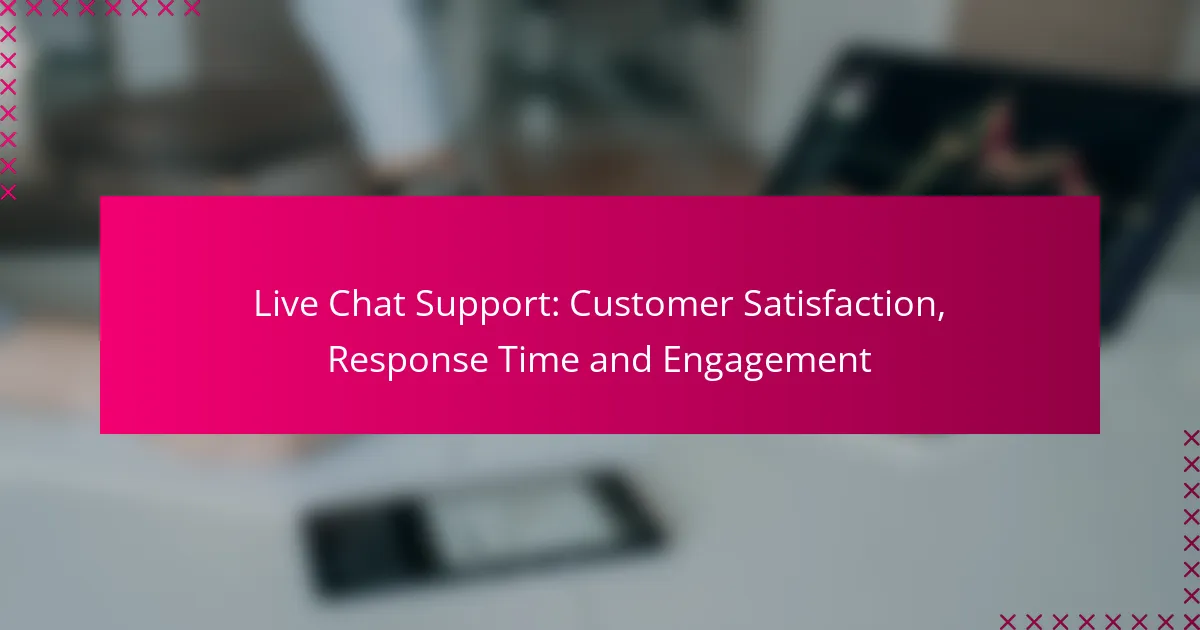Live chat support plays a vital role in enhancing customer satisfaction by offering immediate assistance and personalized interactions. With average response times often ranging from a few seconds to a couple of minutes, businesses can significantly improve customer loyalty by ensuring quick and effective communication. Implementing strategies like proactive chat invitations and chatbots can further enhance engagement and streamline the support experience.

How does live chat support enhance customer satisfaction in the UK?
Live chat support significantly boosts customer satisfaction in the UK by providing immediate assistance and personalized service. Customers appreciate quick responses and tailored interactions, which lead to a more positive experience and increased loyalty.
Increased responsiveness
Live chat support offers rapid response times, often within seconds, which is crucial for customer satisfaction. Unlike email or phone support, where wait times can stretch into minutes or longer, chat allows customers to receive immediate assistance, addressing their concerns promptly.
This immediacy can be particularly beneficial during peak hours when customer inquiries surge. By implementing live chat, businesses can manage multiple conversations simultaneously, ensuring that no customer feels neglected.
Personalized interactions
Live chat enables agents to provide personalized interactions that enhance the customer experience. Agents can access customer data in real-time, allowing them to tailor responses based on previous interactions and preferences.
For instance, if a customer has previously inquired about a specific product, the agent can reference that information during the chat. This level of personalization not only makes customers feel valued but also fosters a stronger connection between the customer and the brand.
Real-time problem resolution
Real-time problem resolution is a key advantage of live chat support, enabling customers to solve issues instantly. When customers encounter a problem, they can describe it in the chat, and agents can provide solutions on the spot, reducing frustration and downtime.
Moreover, live chat can incorporate features like file sharing and screen sharing, which help agents diagnose and resolve issues more effectively. This capability leads to higher first-contact resolution rates, enhancing overall customer satisfaction.

What is the average response time for live chat support?
The average response time for live chat support typically ranges from a few seconds to a couple of minutes. Quick responses are crucial for customer satisfaction, with many businesses aiming for initial replies within 30 seconds to 2 minutes.
Industry benchmarks
Industry benchmarks for live chat response times vary, but a common standard is to respond within 30 seconds. Many top-performing companies achieve response times of under 10 seconds, while acceptable ranges often extend to 1-2 minutes. Businesses should strive to meet or exceed these benchmarks to enhance customer experience.
Factors affecting response time
Several factors can impact the response time of live chat support, including the volume of incoming inquiries, the complexity of customer questions, and the number of available agents. High traffic periods, such as sales events or product launches, can lead to longer wait times.
Additionally, the use of automated responses and chatbots can help reduce initial response times by addressing common queries quickly. However, it is essential to balance automation with human interaction to ensure customer satisfaction and effective problem resolution.

How can businesses improve engagement through live chat?
Businesses can enhance engagement through live chat by implementing strategies that encourage interaction and streamline communication. Key methods include proactive chat invitations and utilizing chatbots to handle initial queries, both of which can significantly boost customer satisfaction and response times.
Proactive chat invitations
Proactive chat invitations involve reaching out to website visitors before they initiate contact. This strategy can help identify potential customer needs and encourage engagement, leading to higher conversion rates. For example, if a visitor spends a certain amount of time on a product page, a chat invitation can pop up, asking if they need assistance.
To implement this effectively, businesses should consider timing and triggers. Setting invitations to appear after a visitor has been on a page for 30 seconds or more can be effective. Additionally, using personalized messages based on browsing behavior can make the interaction feel more relevant and engaging.
Utilizing chatbots for initial queries
Chatbots can efficiently handle initial customer inquiries, providing quick responses and freeing up human agents for more complex issues. By programming chatbots to answer frequently asked questions, businesses can reduce wait times and improve overall customer experience. Common queries might include shipping information, return policies, or product details.
When deploying chatbots, it’s crucial to ensure they are user-friendly and capable of escalating issues to human agents when necessary. Regularly updating the chatbot’s knowledge base with new information can also help maintain its effectiveness. Businesses should monitor interactions to identify areas for improvement and ensure customer satisfaction remains high.

What are the key metrics for measuring live chat effectiveness?
The key metrics for measuring live chat effectiveness include customer satisfaction score (CSAT), first response time (FRT), and chat duration analysis. These metrics help businesses evaluate the performance of their live chat support and identify areas for improvement.
Customer satisfaction score (CSAT)
Customer satisfaction score (CSAT) is a critical metric that gauges how satisfied customers are with their live chat experience. It is typically measured through post-chat surveys where customers rate their experience on a scale, often from 1 to 5 or 1 to 10.
To effectively use CSAT, aim for a score above 80% as a benchmark for success. Regularly analyze feedback to identify trends and areas needing attention, such as response quality or agent behavior.
First response time (FRT)
First response time (FRT) measures how quickly a customer receives an initial reply after initiating a chat. This metric is crucial as it sets the tone for the entire interaction; faster responses generally lead to higher customer satisfaction.
Optimal FRT is often within a few seconds to a couple of minutes. Monitor this metric closely and consider implementing chatbots for initial responses to reduce wait times during peak hours.
Chat duration analysis
Chat duration analysis evaluates the length of conversations between customers and support agents. While longer chats can indicate complex issues, excessively long durations may signal inefficiencies or a lack of agent training.
Strive for an average chat duration of around 5 to 10 minutes for straightforward inquiries. Regularly review chat logs to identify patterns and improve training for agents, ensuring they can resolve issues efficiently.

What tools are available for live chat support in the UK?
In the UK, several tools are available for live chat support, each offering unique features to enhance customer interaction. Popular options include Intercom, Zendesk Chat, and LiveChat, which cater to various business needs and customer engagement strategies.
Intercom
Intercom is a versatile live chat tool that focuses on personalized customer communication. It allows businesses to automate responses and segment users based on their behavior, which can significantly improve engagement rates.
When using Intercom, consider its pricing model, which typically includes a monthly subscription based on the number of users and features. This can range from basic plans to more comprehensive packages that include advanced analytics and integrations.
Zendesk Chat
Zendesk Chat integrates seamlessly with the broader Zendesk customer service platform, making it ideal for businesses already using their services. It offers real-time chat capabilities, automated responses, and a user-friendly interface.
One key feature is its ability to track customer interactions across multiple channels, providing a holistic view of customer engagement. Pricing is generally tiered, allowing businesses to choose a plan that fits their size and needs.
LiveChat
LiveChat is designed for ease of use and quick setup, making it suitable for small to medium-sized businesses. It provides features like chat transcripts, visitor tracking, and customizable chat widgets.
Businesses should be aware of the subscription costs, which can vary based on the number of agents and additional features. LiveChat also offers a free trial, allowing businesses to test its capabilities before committing to a paid plan.

How does live chat compare to other support channels?
Live chat support offers immediate interaction, making it a faster option compared to traditional support channels like email and phone. It combines the efficiency of instant messaging with the personal touch of human interaction, often leading to higher customer satisfaction.
Versus email support
Live chat is generally quicker than email support, which can take hours or even days for a response. Customers appreciate the real-time nature of live chat, allowing them to resolve issues instantly without waiting for email replies.
Additionally, live chat can handle multiple inquiries simultaneously, whereas email support typically requires one agent per customer interaction. This efficiency can lead to reduced wait times and improved overall service quality.
Versus phone support
While phone support provides a personal touch, it often involves longer wait times and can be less convenient for customers who prefer text-based communication. Live chat allows users to multitask while seeking assistance, making it a more flexible option.
Moreover, live chat transcripts can be saved for future reference, which is not typically the case with phone calls. This feature helps both customers and support teams track previous interactions and follow up more effectively.

What are the prerequisites for implementing live chat support?
To successfully implement live chat support, businesses need to focus on staff training and technical infrastructure. These prerequisites ensure that the support team is equipped to engage effectively with customers and that the necessary technology is in place to facilitate smooth communication.
Staff training requirements
Staff training is crucial for effective live chat support. Agents should be trained in product knowledge, communication skills, and the specific chat software being used. This training should ideally include role-playing scenarios to prepare staff for various customer interactions.
Additionally, ongoing training sessions can help keep the team updated on new features and best practices. Regular feedback and performance reviews can also enhance agent skills and improve overall customer satisfaction.
Technical infrastructure needs
A robust technical infrastructure is essential for implementing live chat support. This includes reliable internet connectivity, compatible chat software, and integration with existing customer relationship management (CRM) systems. Businesses should assess their current technology to ensure it can handle the expected volume of chats.
Furthermore, consider the need for data security measures to protect customer information. Compliance with regulations like GDPR may require additional safeguards, especially if operating in regions with strict data protection laws.
